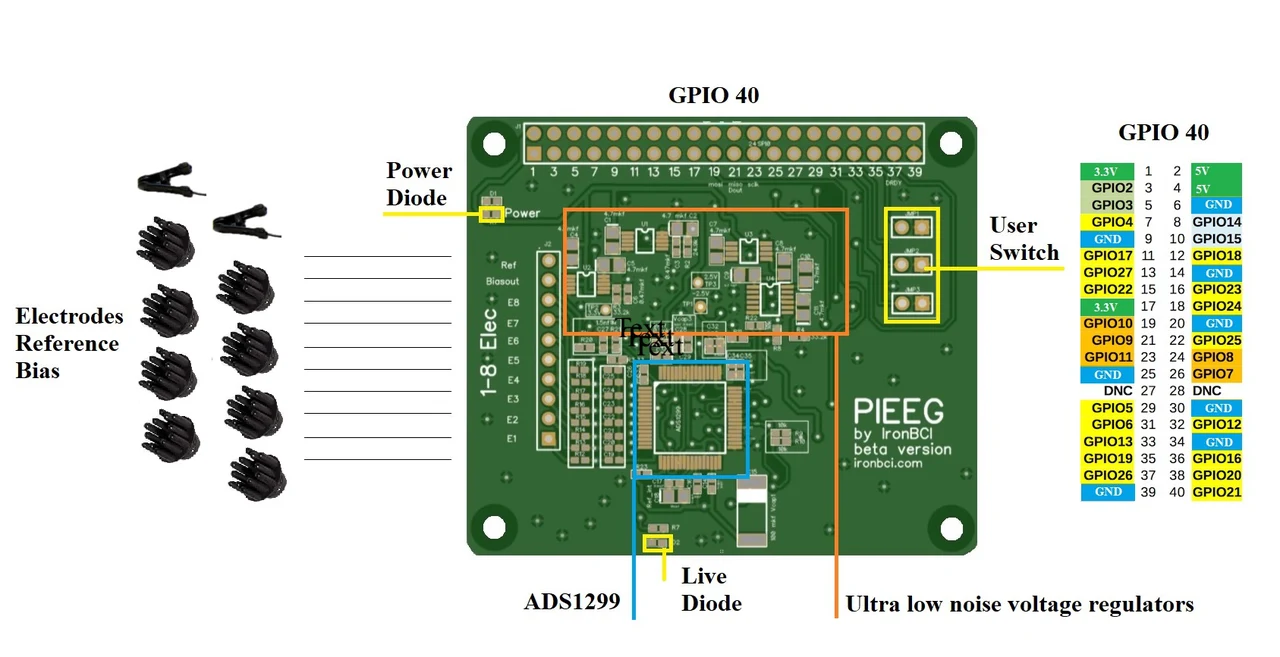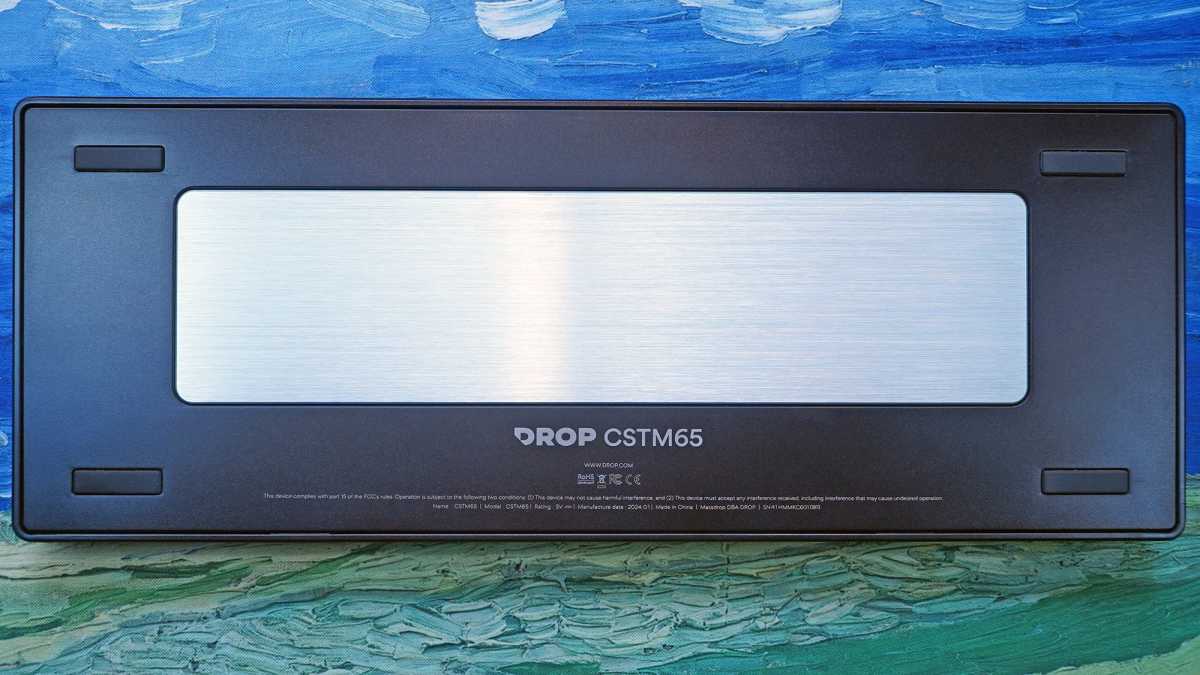If you are searching for a way to be able to explore the intricate signals that your body emits, like the electrical activity of your brain, muscles, and heart. Now, with the PiEEG, a new Raspberry Pi shield, you can dive into this fascinating world of biosignals. This device is perfect for those of you who are tech-savvy and eager to learn more about biosignal analysis. It’s designed to work with Raspberry Pi models 3 and 4 and supports various types of electrodes, offering you a versatile tool for your projects. PiEEG is now available to purchase over on the Crowd Supply website and has already raised over $24,000.
The PiEEG comes with either 4 or 8 channels, which means you can capture multiple signals at once. It uses SPI data transfer for quick communication and has programmable gain to adjust the sensitivity of signal detection. Plus, it boasts a high signal-to-noise ratio, ensuring that the data you collect is clear and precise. Whether you’re into gaming, health monitoring, or even controlling smart home devices, this shield is multifunctional and incredibly useful. It’s also a great educational resource for those interested in fields like neuroscience and machine learning, as it allows for real-time biosignal processing.
EEG, EMG, and ECG bio-signals
It’s important to note that the PiEEG is not a medical-grade device. While it’s excellent for learning and experimenting, it’s not intended to replace professional medical equipment. Always be safe and responsible when using biosignal technology.
The development of the PiEEG is ongoing, with a community of users who regularly share new examples and scripts on GitHub. This means that you can contribute to the project and help shape its future. The collaborative nature of this project ensures that you have access to the latest updates and features. Plus, with comprehensive support and documentation available on GitHub, and the device being released under the GNU General Public License v3.0, you can easily customize and improve the PiEEG to suit your specific needs.

Here are some other articles you may find of interest on the subject of Raspberry Pi 5 mini PC :
Measuring EEG EMG ECG with a Raspberry Pi
EEG (Electroencephalography), EMG (Electromyography), and ECG (Electrocardiography) are types of bio-signals that reflect different aspects of the body’s physiological functions. They are captured through non-invasive electrodes placed on the skin’s surface and provide valuable data for diagnosis, monitoring, and research in various medical and non-medical applications.
EEG (Electroencephalography)
EEG measures the electrical activity of the brain. The brain cells communicate through electrical impulses, and these signals can be detected by electrodes placed on the scalp. The resulting traces, known as EEG waveforms, are characterized by their frequency, amplitude, and phase. EEG is widely used to study brain functions, diagnose neurological disorders (such as epilepsy and sleep disorders), and in brain-computer interfaces (BCIs). The data from EEG can reveal important information about cognitive processes, sleep cycles, and alertness levels.
EMG (Electromyography)
EMG captures the electrical activity produced by skeletal muscles. When muscles contract, they generate an electrical current that can be measured. EMG signals provide information about the strength and pattern of muscle activity. This is crucial for diagnosing neuromuscular disorders, rehabilitating injuries, and improving the design of prosthetics. EMG is also used in sports science to analyze athletic performance and in ergonomics to study muscle fatigue and repetitive strain injuries.
ECG (Electrocardiography)
ECG records the electrical activity of the heart. Each heartbeat generates an electrical impulse that propagates through the heart, triggering the muscle to contract and pump blood. The ECG waveform, characterized by its P, Q, R, S, and T waves, reflects the sequential activation and recovery of the atria and ventricles. ECG is essential for diagnosing and monitoring heart diseases, such as arrhythmias, heart attacks, and heart failure. It is also used in fitness and stress testing to evaluate heart health and response to physical activity.
Each of these bio-signals provides a window into the functioning of different parts of the human body, offering insights that can guide medical treatment, enhance athletic performance, and contribute to our understanding of physiological processes. The interpretation of these signals requires sophisticated analysis techniques and domain-specific knowledge, as the data can be complex and subject to various kinds of noise and artifacts.
Features & Specifications
- Compatible with Raspberry Pi 3 or 4
- 4 or 8 channels for connecting wet or dry electrodes
- Data transfer via SPI protocol with a frequency from 250 SPS to 16 kSPS and a resolution of 24 bits per channel
- Programmable signal gain: 1, 2, 4, 6, 8, 12, 24
- Ability to measure impedance
- Common-Mode Rejection Ratio CMRR: 120
- Internal noise: 0.4 μV
- External noise: 0.8 μV
- Signal-to-noise ratio (SNR): 130 dB
- LEDs for power indication and ADS1299 connection indication
- 3 free pins for connecting external objects (ground and Raspberry Pi channel)
- 33 Pins from the Raspberry Pi GPIO can be used for various tasks, like connecting external devices
- Easy programming with the provided open source software for reading and processing data in Python, C, and C++
When you compare the PiEEG to other devices that measure biosignals, it stands out for its affordability and functionality. It’s a cost-effective choice that doesn’t skimp on the essential features you need for your biosignal measurement projects.
The PiEEG is a valuable tool for anyone who’s curious about the world of biosignals. With its compatibility with Raspberry Pi, ability to process signals in real-time, and strong community support, it’s an excellent addition to both educational settings and personal hobby projects. If you’re ready to start exploring biosignals with the PiEEG, all the support and documentation you need is available on GitHub.
Filed Under: Hardware, Technology News
Latest togetherbe Deals
Disclosure: Some of our articles include affiliate links. If you buy something through one of these links, togetherbe may earn an affiliate commission. Learn about our Disclosure Policy.






